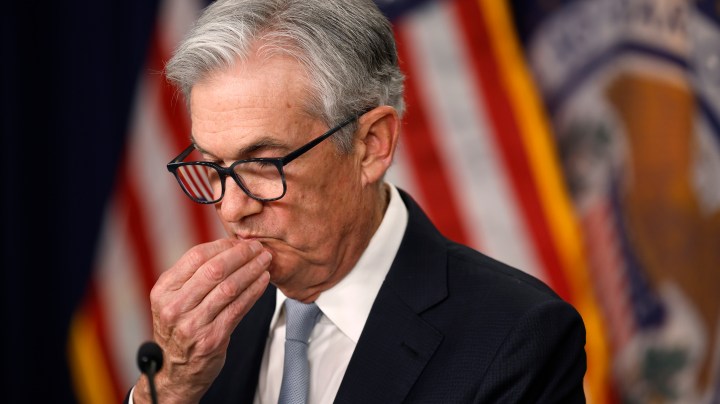
Wage growth seems to be slowing. But is it enough to please Fed policymakers?
Wage growth seems to be slowing. But is it enough to please Fed policymakers?

Average hourly earnings have been steadily moving upward pretty much all year long. Tracking wage growth is really important to the Federal Reserve right now because it’s trying to tamp down price inflation — and wage inflation can sometimes drive price inflation.
This week, Fed Chair Jerome Powell said wage gains have been “out of line,” “moving sideways at an elevated level” and “well above” the level needed to get down to the Fed’s long-term target of 2% inflation.
From that perspective, the October jobs report was good news — maybe — because it showed wage gains moderating. And that may just be what the Fed wants.
Wages were up 4.7% year over year in October — down from 5% the month before.
“If you look last month compared to the three months prior, wage growth has been certainly moderating, and appears to be decelerating over the last few months,” said Elise Gould at the Economic Policy Institute.
That’s evidence that the Fed’s interest-rate hikes are taking some heat out of the job market, according to Curt Long at the National Association of Federally-Insured Credit Unions.
“We’re seeing less job churn,” he said. “People are quitting their jobs at slightly lower rates than they were previously. Employers are not having to work quite so hard to keep current staff on their payrolls.”
That means offering raises is less urgent than it was earlier in the year.
All well and good. But Fed Chair Powell said this week he wants to see wage growth fall to a level “consistent with 2% inflation.” Wage growth certainly isn’t that low yet.
But it doesn’t have to be, Gould said. “We want to have wage growth that at least exceeds inflation so that people have increase in their living standards, increases in their ability to make ends meet. And we also want workers to see the returns of their increased productivity. Over the long term, we see productivity growth around 1.5%.”
That means if the Fed could get wage growth down to around 3.5%, that might be good enough to fight inflation.
And there’s no reason to think we need wage growth to be any lower right now, said Robert Frick at Navy Federal Credit Union.
“Wage increases at this moment are an absolute good. They’re helping Americans keep up with inflation, at least to some extent,” he said. “And they’re not contributing to inflation.”
The Fed chair himself seems to agree. Powell said earlier this week: “We want wages to go up. We just want them to go up at a level that’s sustainable and consistent with 2% inflation.” And not so much that they spark a wage-price spiral.
Clarification (Nov. 7, 2022): This story has been amended to clarify the context of a quote from Federal Reserve Chair Jerome Powell.
There’s a lot happening in the world. Through it all, Marketplace is here for you.
You rely on Marketplace to break down the world’s events and tell you how it affects you in a fact-based, approachable way. We rely on your financial support to keep making that possible.
Your donation today powers the independent journalism that you rely on. For just $5/month, you can help sustain Marketplace so we can keep reporting on the things that matter to you.

















